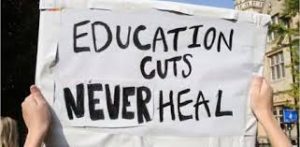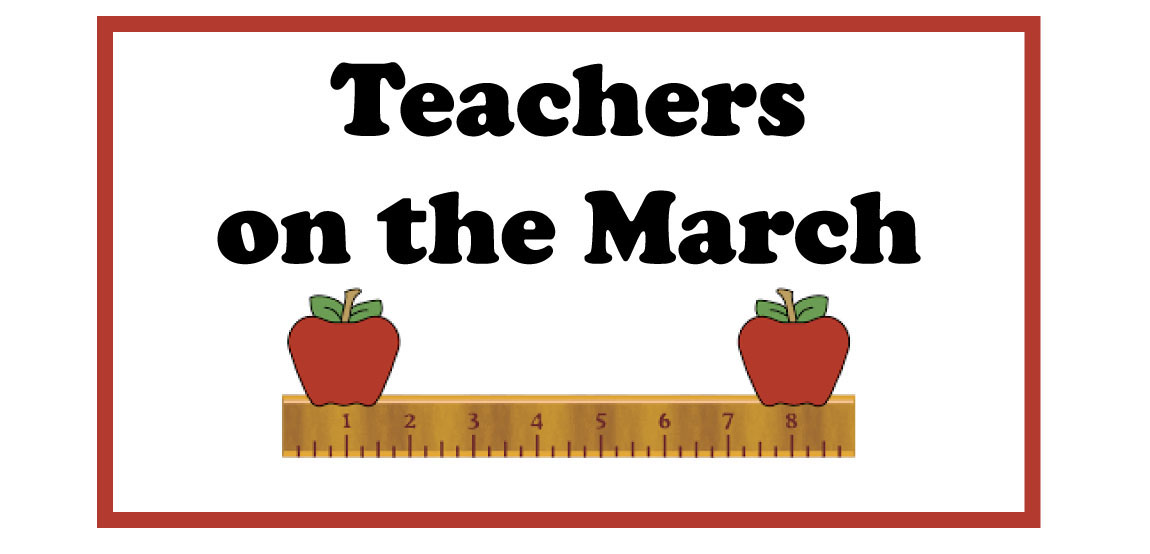Teachers in West Virginia, Kentucky, Oklahoma and Arizona are turning to union tactics, including walkouts and highly publicized teacher protests, to emphasize the catastrophic financial situation that is afflicting many public school districts in their states.
 It’s a new trend, fostered by frustration over shockingly low teacher salaries and constantly diminishing financial support for such education necessities as textbooks, school supplies, and maintenance of school facilities themselves.
It’s a new trend, fostered by frustration over shockingly low teacher salaries and constantly diminishing financial support for such education necessities as textbooks, school supplies, and maintenance of school facilities themselves.
Some Important Background about Teacher Protests
During the 1960s and 1970s, teacher protests were common. Between July 1960 and June 1974, the U.S. experienced over 1,000 teacher strikes involving more the 823,000 teachers. The result? By the end of the 1970s, collective bargaining agreements covered 72 percent of public teachers.
The first collective bargaining agreement for teachers came in1962 in New York City following a strike in 1960. Teachers were part of the movement to expand collective bargaining to public employees in general, expanding that right from only 2 percent in 1960 to 63 percent in 2010.
Many changes were happening in the U.S. during those years. The 1970s saw the resignations of Agnew and Nixon, the call by the Chamber of Commerce for businesses to organize for political strength, New York City’s bankruptcy, price controls, gas lines, a recession and stagflation — a stagnant economy with rampant inflation.
So, the nation turned rightward. Students, minorities, so-called welfare queens, liberals and unions were blamed. Ronald Reagan won the presidency in 1980 and quickly moved to cuttaxes, expand the military and attack workers’ rights. In 1981, the Professional Air Traffic Controllers Organization (PATCO) went on strike, resulting in Reagan firing over 11,000 striking members. Busting the air traffic controllers union was arguably the single biggest setback to unions in the last 30 years.
Support for Education Diminished
As the conservative movement continued to strengthen, public services were slashed as corporations and the wealthy won tax cuts causing funding for education and schools to be redeuced.Today, programs are cut. Buildings are not repaired. Teachers use their own money for books and supplies.
The New York Times heard from 4,200 teachers talking about broken laptops, books held together with duct tape and an art teacher who makes watercolors by soaking old markers. Teachers fighting against cuts are characterized as thugs by politicians to portray a threatening image more like a mobster than an educator.
Not all education funding is shrinking. Pearson publishing company realizes about $4 billion of its annual sales from its North American division. Politico reported that in its K-12 business, Pearson writes the textbooks and tests, administers teacher licensing exams, tracks student behavior, and diagnoses and treats attention deficit disorder. The publication’s investigation revealed questionable practices, such as no-bid contracts, and payments despite poor results.
That $4 billion won’t fix leaky ceilings; it won’t repair broken computers and it won’t help teachers pay for their own supplies. There are better ways to spend billions of dollars of education funding. In the short term, repairing buildings not only improves the education environment, it produces jobs. In the long run, studies show that a dollar investment in early childhood programs returns eight to sixteen dollars to society.
It’s Time to Support Education
Rather than arming teachers as some line of defense; rather than calling them a thug when a teacher protests for adequate funding; rather than blaming them when the government cuts corporate taxes and doesn’t provide the resources necessary for teachers to do their job, it’s time to treat teachers and public employees as professionals.
Teachers are educated; they pass qualifying exams and they are dedicated to much more than a paycheck. Respect their work by providing the schools and supplies they need to be successful, recognize them as professionals who shouldn’t need to moonlight as Uber drivers to survive, and understand that education is an investment with a generous payoff in the future.

As the bumper sticker says: “If you can read this, thank a teacher.”
Contribution by Rick Patelunas.






